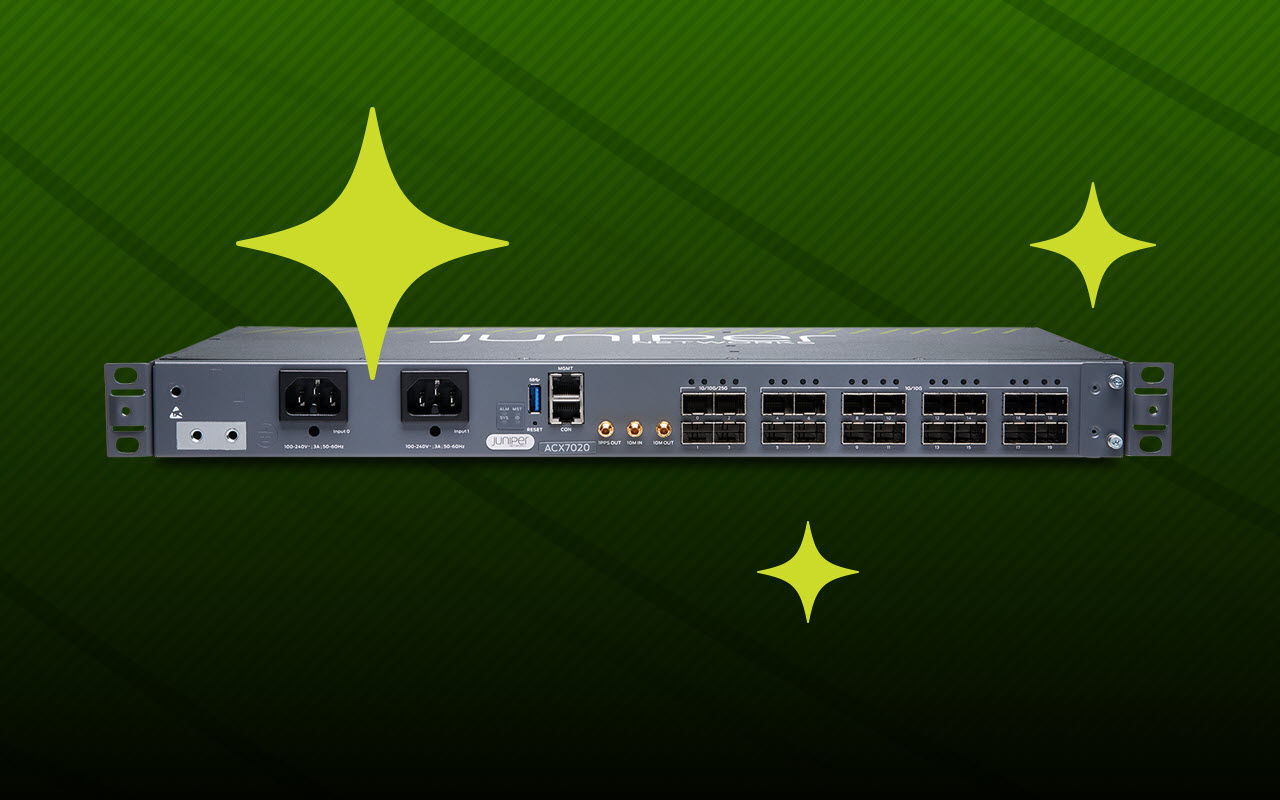As artificial intelligence (AI) and machine learning (ML) continue to transform various industries, more and more AI leaders are concerned about data center power efficiency and carbon containment. Power hungry and energy-intensive GPUs, accelerators, and other specialized AI data center hardware produce significant heat, creating a critical challenge for data center operators.
This blog explores the importance of thermal management in AI data centers, emphasizing strategies and technologies that can mitigate the risks associated with overheating. It also highlights how Juniper Networks plays a crucial role in helping AI data centers optimize energy efficiency and performance.
Why thermal management matters in AI data centers
AI workloads, especially those involving deep learning and large-scale training models, require highly dense hardware such as GPUs, TPUs, and ASICs. Drawing as much as 1000W per chip, the power density and heat generated by the hardware are a significant challenge, as poor thermal management can lead to:
- Hardware degradation and downtime: Extended exposure to high temperatures can accelerate component wear, shortening the hardware’s lifespan and reliability. High temperatures can also lead to unexpected system failures, resulting in expensive downtimes for mission-critical AI applications.
- Performance bottlenecks: Overheating hardware can be forced into throttling mode to prevent damage, which slows processing speeds and reduces efficiency.
- Higher operational costs: Poor thermal management often requires more power for cooling systems, driving up electricity costs.
Given the complexity and demands of AI workloads, efficient thermal management is not an option; it is a necessity to ensure optimal performance and operational stability.
The challenges of cooling AI data centers
AI hardware is typically deployed in tightly packed server racks, resulting in higher power densities than in traditional data centers. These densities can sometimes exceed 120kW per rack, and as AI workloads grow, traditional air-cooling methods may no longer be enough. Some of the challenges AI data centers face include:
- Increased heat density: Modern GPUs and accelerators generate significantly more heat per unit compared to traditional CPUs, so data centers must implement sophisticated cooling technologies.
- Energy efficiency: Cooling systems can use a lot of energy in the data center, leading to higher operational costs. Balancing cooling efficiency and energy consumption is crucial.
- Hotspots and uneven temperature distribution: AI workloads can create localized hotspots, where certain pieces of hardware operate at much higher temperatures than others, which makes it difficult for conventional cooling solutions to maintain an even temperature distribution.
- Scalability issues: As AI workloads continue to grow, conventional cooling systems may struggle to keep up with the increasing demands. Scaling up with more server racks means also scaling potential inefficiencies.
Thermal management strategies for AI data centers
To manage the thermal challenges of AI data centers, the industry is adopting several innovative cooling strategies:
- Liquid cooling: Liquid cooling, which uses water or specialized coolants to absorb and dissipate heat, is one of the most effective solutions for managing high-density hardware. This technology includes:
- Direct Liquid Cooling (DLC): Coolant is circulated through pipes directly to the hottest components, such as GPUs and CPUs, transferring heat more efficiently than air cooling.
- Immersion cooling: Servers are submerged in a dielectric fluid that absorbs heat from the hardware. This method provides high cooling capacity while reducing noise and energy consumption from fans.
- Hot/cold aisle containment: One of the most widely used techniques for improving airflow efficiency. This method directs cold air from the cooling system into the server intake while hot air is isolated and vented away. This reduces the recirculation of warm air, improving overall cooling efficiency.
- AI-driven cooling systems: AI-based cooling systems use sensors and ML algorithms to optimize cooling dynamically. These systems analyze the temperature and airflow within the data center and make real-time adjustments to the cooling mechanisms. This approach enhances thermal management and reduces energy consumption by preventing overcooling.
- Edge data centers and distributed AI: Leveraging edge computing to process workloads closer to data sources can make data center operations more sustainable and efficient. By reducing reliance on centralized, large-scale GPU clusters that demand extensive cooling solutions, edge computing minimizes energy consumption and thermal output. This approach not only streamlines data processing but also enables the use of smaller, localized data centers.
When combined with distributed AI, this model processes data at its source, reducing latency and excessive network bandwidth requirements. As a result, organizations can decrease their overall thermal footprint while maintaining high-performance capabilities, contributing to both environmental sustainability and operational cost savings.
How Juniper Networks supports sustainable AI data centers
Juniper plays a critical role in helping AI data centers meet their thermal management and sustainability goals through its advanced networking solutions. Here’s how Juniper products contribute to a cooler, more efficient AI infrastructure:
- QFX Series Switches: The Juniper Networks® QFX Series offers high-performance, high-density switches engineered explicitly to handle the most demanding AI workloads in modern data centers. These switches are designed with energy efficiency in mind, optimizing thermal management at the component, board, and system levels. This includes implementing fan speed control to lower power consumption, leading to significant energy savings. Unused ports can be configured to remain inactive or disabled, further conserving power.
The design allows for the shutdown of ports or gearboxes when not in use. The switches also feature custom ASIC SERDES level power control and support new types of optics, such as LPO, among other advancements. Using sophisticated power management techniques to minimize energy consumption, the QFX lowers operational costs and minimizes environmental impact.
- Junos OS Evolved: The Junos® operating system enhances data center operations with advanced telemetry, automation, and analytics capabilities. Operators can monitor real-time thermal data and proactively adjust their cooling strategies. With Junos Evolved, data centers can respond quickly to thermal fluctuations, ensuring consistent operational efficiency.
- Juniper Apstra automation: Juniper Apstra™ enables seamless network automation and policy orchestration across large AI data centers. Juniper Apstra dynamically manages workloads and network traffic through auto-tuning. It detects potential overheating issues via probes and alerts operators to avoid hardware degradation, helping maintain system integrity.
The future of thermal management for AI infrastructure
Thermal management in AI data centers presents a significant challenge in the evolving computing landscape. As AI workloads require greater compute resources, the demand for efficient data center cooling solutions will increase dramatically. By implementing advanced thermal management strategies now, data centers can meet the rigorous performance requirements of AI applications and keep operational costs under control.
With its high-performance switches, automated fabric management with Juniper Apstra Cloud Services™, and energy-efficient solutions, Juniper Networks is helping build the next generation of AI data centers. Tackling these thermal challenges empowers organizations to unleash the full potential of their data center infrastructures, promote sustainability, and ensure long-term success in their AI initiatives.

























